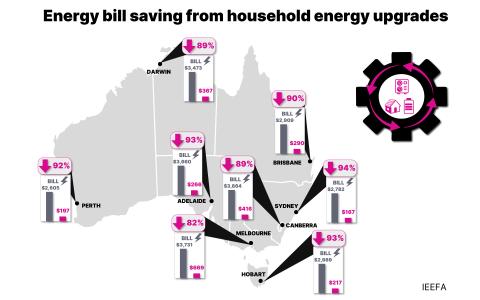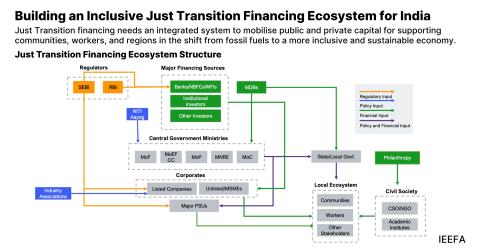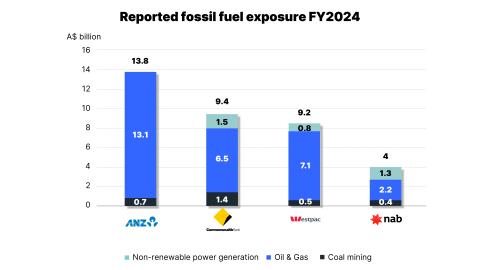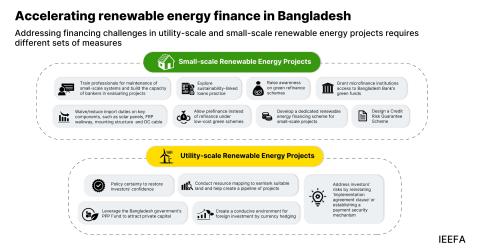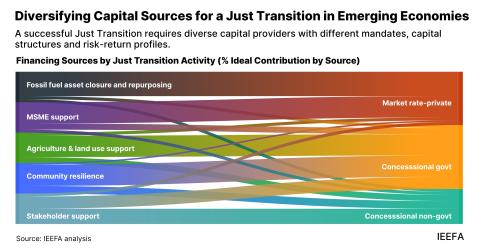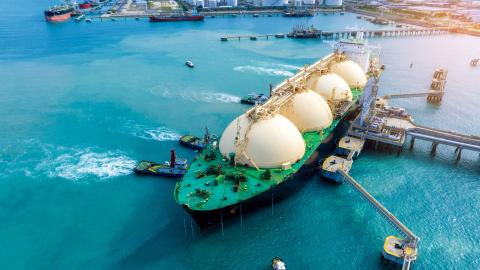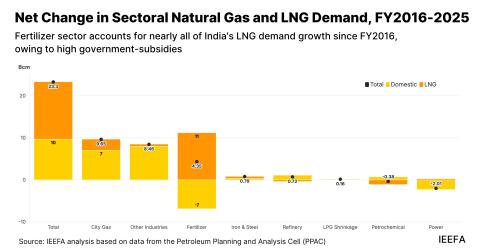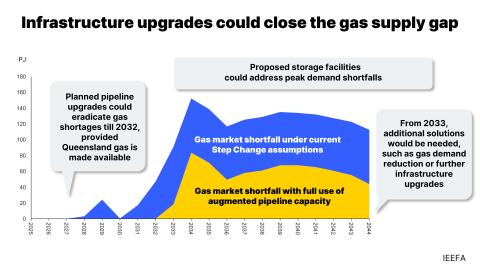IEEFA Energy Finance 2021: Week one in review
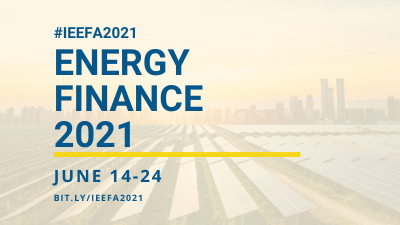
June 18, 2021 (IEEFA) ⎼ Energy experts, financial analysts, legal and policy specialists, activists and journalists gathered online this week for IEEFA’s 2021 Energy Finance conference. Held remotely due to international travel restrictions related to COVID, the sessions highlighted the latest trends in the global energy transition. Visit IEEFA’s conference page for session recordings, a recap of the week’s program follows:
Two Energy Economies, One World
June 14, 2021
Keynote speaker Michael Liebreich, founder of Bloomberg New Energy Finance and CEO of Liebreich Associates, and moderator Sergio Knaebel, of the Sandler Foundation, kicked off the Energy Finance 2021 conference by discussing the rapid pace of renewable energy’s market penetration.
“The world record [price of production by kilowatt hour] becomes the median in a good resource location in somewhere around three to five years,” said Liebreich, discussing the trend of more competitive renewable energy production. In any given year, he suggested, the world record production price is a “postcard from the future” because of how reliably costs decrease over time.
While investments in zero emissions technology appear to have peaked near 2010, the capacity of renewable energy has continued to increase. According to Liebreich, It was possible to ignore clean energy as recently as two decades ago, and a decade ago it was possible to laugh at it. “But we’re at a point where there is a real fight going on,” he said.
In a parallel energy economy, coal is sharply declining around the world as its finances become harder to justify. According to Liebreich’s data, gas is not only being forced out of the electricity market but also from the peaking market by battery storage. Is gas the answer to coal? Liebreich says no.
Coal in the U.S.: Implications for Communities as the Pace of Closures Quickens
June 15, 2021
IEEFA energy data analyst Seth Feaster joined Faith in Place’s Celeste Flores and the BlueGreen Alliance’s Kate French to discuss a surge in coal plant closures.
According to Feaster, the durability of wind and solar power is accelerating significantly. An adoption of battery storage will lead coal-produced power to run less, or possibly move to a seasonal-use basis. In 2020, plants ran at 40% capacity.
Flores’s presentation focused on the human aspect of the energy transition. As renewable energy takes center stage and fossil-based plants close, the need for worker transition programs will grow.
In Illinois, Faith in Place is pushing for the implementation of the Energy Community Investment Act, which would provide much needed worker support. It would also offer tax credits for employers within clean energy zones. [Note: On June 17, NRG announced the closure of the Waukegan coal plant that Flores’s group had opposed.]
Gas: The Weakening Case for U.S. Liquified Natural Gas Exports
June 16, 2021
With U.S. gas-fired power plants plateauing, IEEFA’s Cathy Kunkel, Sam Reynolds, and Thu Vu joined the Sierra Club’s Rebekah Hinojosa to discuss the consequences of slowing demand for natural gas in the U.S., and the U.S. gas industry’s high hopes for liquified natural gas (LNG) exports.
As U.S. producers seek new opportunities abroad, market penetration in Asia has been difficult. According to Vu, LNG import growth in the region has come from China and a growing number of smaller economies, such as Thailand and Pakistan. The competitive market has led to U.S. LNG seeing a limited Asia-Pacific market penetration of 5%, and less than 1% in emerging Asia.
Domestically, more than a dozen LNG export terminals are proposed for the U.S. portion of the Gulf of Mexico due to extraction in West Texas’s Permian Basin, according to Hinojosa. As LNG exports grow from 12% in 2019 to 23% by 2030, the potential for ecosystem damage, disregard for indigenous rights and air pollution will increase dramatically.
Gas exports appear to be causing optimism among U.S. producers, although it is no longer seen as a bridge fuel, according to Reynolds. Policy hesitancy in the federal government allows for this optimism, but it also presents the industry with potential issues down the road.
Oil: Why Big Oil Isn’t So Big Anymore
June 17, 2021
IEEFA’s Clark Williams-Derry joined Capital Assets Sustainable Energy Development’s Stephen Brown and Earthjustice’s Adrienne Bloch to examine the ramifications of declining demand for oil.
Williams-Derry suggested that the industry’s profitability, financial power and future prospects are all in decline. Recent headlines suggest a rebound for the industry over last year, but the longer-term data is clear: the fracking boom has been a financial bust.
Overproduction has been one of the industry’s major issues, but outside forces will also play a part. Electrification commitments made by major auto manufacturers suggest a bleak future for oil. Analysts, including those at BP and Total, are talking about peak oil consumption, which will impact the future of investments and likely cause a contraction of the industry.
According to Brown, Texas’s renewable resources are being pushed to the side as viable energy-producing alternatives. The state needs to do better to fold wind and solar into its energy grid.
One-fifth of Texans experienced a loss of power due to inadequate delivery of gas during major winter storms. But storms may not be the only problem for Texas’s power grid if it remains tied to fossil fuels. Economic factors, such as price wars among OPEC countries and the pandemic, will drive bankruptcies in the oil and gas industry, ultimately burdening the Texas Railroad Commission with the responsibility to clean up abandoned wells.
To view the session recordings, go to our Energy Finance 2021 conference page.
Muhamed Sulejmanagic ([email protected]) is IEEFA’s media relations manager.
About IEEFA
The Institute for Energy Economics and Financial Analysis (IEEFA) examines issues related to energy markets, trends and policies. The Institute’s mission is to accelerate the transition to a diverse, sustainable and profitable energy economy.


